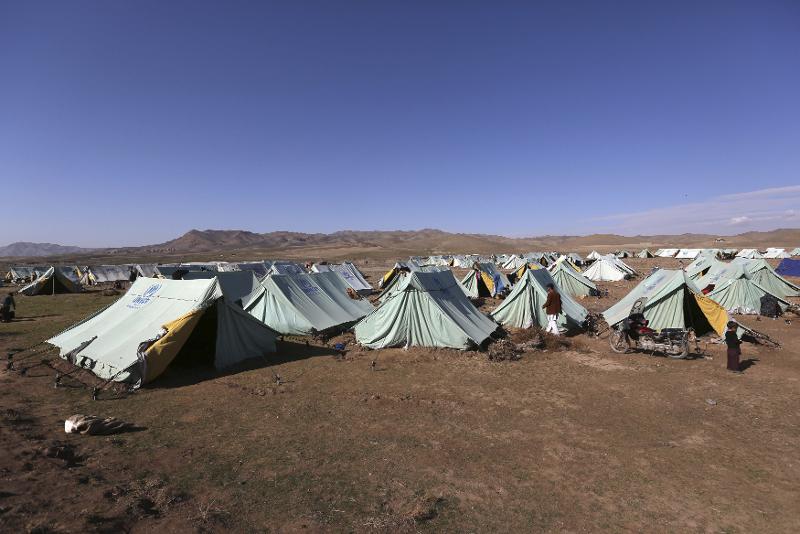In the past six years, 43.1 million children across 44 countries have been uprooted from their homes due to devastating weather disasters. This UNICEF report sheds light on the alarming impact of floods, storms, droughts, and wildfires on the lives of vulnerable children. Let's delve into the staggering numbers and the urgent need for action to protect these young lives.
The Alarming Scale of Child Displacement
The devastating impact of weather disasters on children
Weather disasters have wreaked havoc on the lives of children, forcing a staggering 43.1 million of them to flee their homes in just six years. This UNICEF report highlights the immense scale of child displacement caused by floods, storms, droughts, and wildfires.
Children, the most vulnerable members of society, are bearing the brunt of these climate-related disasters. Let's explore the factors contributing to this crisis and the long-term consequences for these displaced children.
The Dominant Role of Floods and Storms
How floods and storms are driving child displacements
Floods and storms emerge as the primary catalysts for child displacements, accounting for a staggering 95% of recorded cases. The destructive power of these natural disasters leaves communities devastated and children uprooted from their homes.
As climate change intensifies, the frequency and severity of floods and storms are expected to increase, posing an even greater threat to vulnerable children. With river floods alone projected to displace nearly 96 million children in the next three decades, urgent action is needed to protect these young lives.
Displaced Children: A Global Perspective
Examining the countries most affected by child displacement
While weather disasters impact children worldwide, certain countries face a higher risk due to their exposure to extreme weather events, high child populations, and varying levels of preparedness. China and the Philippines have recorded some of the highest numbers of displaced children, reflecting their vulnerability to weather extremes and their capacity for early warning and evacuation.
However, it's crucial to consider the proportion of displaced children in relation to the total population. Small island nations like Dominica and Vanuatu face a disproportionate threat from powerful storms, while floods pose the greatest risk to children in Somalia and South Sudan. These regional disparities highlight the urgent need for targeted interventions to safeguard the lives of vulnerable children.
The Terrifying Impact on Children's Lives
The emotional and psychological toll on displaced children
For children, the experience of being uprooted from their homes due to weather disasters is nothing short of terrifying. The ferocity of wildfires, storms, and floods can leave a lasting impact on their emotional and psychological well-being.
UNICEF's Executive Director, Catherine Russell, emphasizes the urgent need to respond to this escalating challenge for children. Strengthening efforts to prepare communities, protect at-risk children, and support those already displaced is crucial in mitigating the traumatic effects of these climate-driven movements.
The Urgency for Climate Action
Addressing the escalating challenge for children
As the impacts of climate change continue to escalate, so too will the displacement of children. The tools and knowledge to respond to this crisis exist, but the pace of action is far too slow. It is imperative to strengthen efforts in preparing communities, protecting at-risk children, and providing support to those already uprooted.
With COP28 on the horizon, the sense of urgency for ambitious climate action has never been greater. The international community must come together to prioritize the protection of vulnerable children and ensure their safety in the face of climate-related disasters.
Conclusion
The UNICEF report's findings paint a distressing picture of the impact of weather disasters on children. With 43.1 million children displaced within a six-year period, the scale of this crisis is alarming. Floods, storms, droughts, and wildfires continue to uproot young lives, leaving them vulnerable and traumatized.
Urgent action is needed to address the escalating challenge of climate-driven child displacement. Strengthening preparedness, protecting at-risk children, and providing support to those already displaced are crucial steps. As the world faces the reality of a changing climate, it is imperative that we prioritize the safety and well-being of our most vulnerable population.
FQA :
What are the primary causes of child displacement due to weather disasters?
Floods and storms account for 95% of recorded child displacements caused by weather disasters.
Which countries are most affected by child displacement?
China and the Philippines have recorded some of the highest numbers of displaced children, while small island nations like Dominica and Vanuatu face a disproportionate threat.
What is the emotional impact on displaced children?
Being uprooted from their homes due to weather disasters can have a lasting emotional and psychological toll on children.
What can be done to address the challenge of climate-driven child displacement?
Efforts must be made to strengthen community preparedness, protect at-risk children, and provide support to those already displaced. Urgent climate action is crucial in mitigating the impact on vulnerable children.

